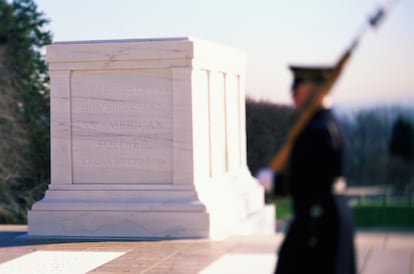Veterans Day history: Why is it also called Armistice Day?
After World War I, Armistice Day was created to celebrate the ending of hostilities. After WWII, its name was changed

On November 11, 1918, the Allies of World War I and their last remaining opponent, Germany, signed an armistice at Le Francport near Compiegne in France. “The armistice was officially signed at 5:45 a.m. by the Allied Supreme Commander, French Marshal Ferdinand Foch, and it came into force at 11:00 a.m. CET, marking a victory for the Allies and a defeat for Germany.” The armistice ended fighting on land, sea, and air. However, this was not a formal surrender.
According to the Department of Veteran Affairs, the original concept for the celebration was for a day observed with parades and public meetings and a brief suspension of business, starting at 11:00 a.m.
Although the armistice ended fighting, it took six months of Allied negotiations at the Paris Peace Conference to conclude the Treaty of Versailles, which was signed on 28 June 1919 in the Palace of Versailles, in France, exactly five years after the assassination of Archduke Franz Ferdinand, which led to the war.
Armistice Day
In November 1919, U.S. President Woodrow Wilson proclaimed November 11 as the first commemoration of Armistice Day saying: “To us in America, the reflections of Armistice Day will be filled with solemn pride in the heroism of those who died in the country’s service and with gratitude for the victory, both because of the thing from which it has freed us and because of the opportunity it has given America to show her sympathy with peace and justice in the councils of the nations…”
In 1921, an unknown American soldier who fought in WWI was buried in Arlington National Cemetery, which has become the focal point of reverence for the country’s veterans. Similar ceremonies took place earlier in England and France. In England, an unknown soldier was buried in Westminster Abbey. In France one was buried in the Arc de Triomphe. These gestures occurred on November 11, which gave recognition to the ending of WWI fighting, becoming known as “Armistice Day.”
Armistice Day was named officially in the United States in 1926 through a resolution from Congress. 12 years later, on May 13, 1938, a new act established November 11 as a recognized legal annual holiday. This day was designated to be devoted to the pursuit of global peace and was named Armistice Day.
Change to Veterans Day
The term Veterans Day was first used in 1947, after World War II, during a celebration in Birmingham, Alabama, organized by a World War II veteran named Raymond Weeks. The event was called “National Veterans Day” and it was held on November 11, during Armistice Day.
In 1954, U.S. Representative Edward Rees of Kansas proposed a bill to change Armistice Day to Veterans Day. At the urging of the Veterans service organizations, Congress amended the Act of 1938 by striking out the word “Armistice” and inserting “Veterans.” The bill was signed by President Eisenhower on October 8, proclaiming November 11 as Veterans Day.
In 1968, a law that changed the national commemoration of Veterans Day to the fourth Monday in October was passed. However, many Americans kept celebrating it on November 11. So, in 1978 Congress returned the observance to the original date.
Veterans Day Celebrations
Arlington National Cemetery serves as the central location for official and national ceremonies dedicated to Veterans Day. The focal point of these ceremonies remains the memorial amphitheater, where the Tomb of the Unknowns is located. At 11 a.m. on November 11, a unified color guard, who represents all military services, performs a ceremonial “Present Arms” at the tomb. The country’s homage to its fallen soldiers is symbolized through the laying of a presidential wreath, followed by the solemn rendition of “taps” by a bugler. The rest of the ceremony takes place in the amphitheater.
Sign up for our weekly newsletter to get more English-language news coverage from EL PAÍS USA Edition










































